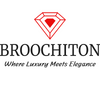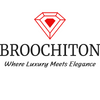Fashion jewelry has been an integral part of human culture for thousands of years, representing not only personal style but also status, identity, and history. The evolution of fashion jewelry has transformed dramatically from ancient times to the modern trends we see today. This blog post will explore the fascinating journey of fashion jewelry, highlighting key stages in its development, the materials used throughout the ages, and how contemporary styles reflect both traditional influences and innovative designs.
The Dawn of Adornment: Ancient Jewelry
Jewelry's origins can be traced back to ancient civilizations, where humans began creating adornments for various purposes. In these early days, jewelry was typically crafted from natural materials such as shells, bones, and stones.
Ancient Civilizations and Their Significance
From the Egyptians who adorned themselves with gold and semi-precious stones, to the Greeks who celebrated beauty through intricate designs, jewelry served many roles:
- Symbolism: Jewelry often represented power, religious beliefs, or cultural heritage.
- Ritual Uses: In many cultures, specific pieces were worn during important life events and ceremonies.
- Status and Wealth: Precious metals and gemstones signified social status and wealth.
The Role of Materials
The materials used in ancient jewelry varied widely by region and availability. The Egyptians favored gold for its durability and luster, while the Celts utilized intricate bronze pieces. This early use of materials laid the groundwork for the diverse craftsmanship seen in fashion jewelry today.
The Middle Ages: A Time of Change
As we moved into the Middle Ages, the landscape of jewelry evolved considerably. This era marked a shift in the types of jewelry worn, brought forth by changes in religion, politics, and trade.
Religious Influence and Symbolism
During the Middle Ages, jewelry became heavily influenced by the Church. Crosses, saints’ medallions, and other religious symbols became prevalent, reflecting the era’s spiritual values.
Fashion and Opulence
The aristocracy began to showcase their wealth through extravagant jewelry pieces, often decorated with precious stones. In many ways, this was a precursor to the modern idea of fashion jewelry as a statement piece.
The Renaissance: Revival of Art and Creativity
The Renaissance period heralded a revival of the arts and humanist philosophy. Jewelry design flourished, blending artistry and craftsmanship.
Innovative Techniques and Styles
Graceful designs, intricate engravings, and bejeweled pieces became symbols of status and refinement. Techniques such as enamel and stone setting became more sophisticated, demonstrating the skill of artisans.
The Rise of Personal Adornment
This era saw a rise in personal adornments like brooches, rings, and pendants, which celebrated individuality alongside traditional symbols of status. Fashion jewelry became both a personal expression and a social commentary.
The Industrial Revolution: Mass Production and Accessibility
The Industrial Revolution brought about significant changes in jewelry production. It allowed for mass production techniques, making jewelry more accessible to the wider population.
New Materials and Techniques
With advancements in technology, jewelry it was no longer solely for the elite. New materials, such as base metals and glass, began to incorporate into jewelry making. This period birthed a wave of creativity, as designs became more varied and accessible.
The Birth of Costume Jewelry
Costume jewelry, or fashion jewelry, began to emerge, allowing people to enjoy sparkling adornments without breaking the bank. This democratization of fashion jewelry set the stage for modern trends, advocating for self-expression through personalized adornment.
The 20th Century: Style Revolutions
The 20th century was marked by rapid change in societal norms, styles, and the fashion industry itself. Jewelry mirrored these changes, evolving rapidly throughout the decades.
The Roaring Twenties and Beyond
The 1920s brought about boldness with flapper culture, where extravagant pieces like long strand necklaces, chandelier earrings, and art deco styles flourished. Each decade had its iconic styles:
- 1930s: Hollywood glam, featuring bold, dramatic pieces.
- 1940s: Wartime led to pragmatism, with simpler designs using less material.
- 1960s: A counterculture movement that embraced daring and avant-garde designs.
- 1970s: A return to nature and bohemian styles, incorporating natural materials.
- 1980s: Glam rock and excess, characterized by oversized pieces.
The Influence of Celebrity and Pop Culture
Fashion jewelry became intertwined with celebrity culture, with stars and media influencing trends. Jewelry ads featured iconic figures, boosting visibility and desirability, allowing everyone to emulate their favorite personalities.
The Modern Era: Sustainability and Personalization
As we entered the 21st century, the fashion jewelry industry faced new challenges and opportunities. The modern era is characterized by a conscious shift towards sustainability and individuality.
Ethical Practices in Fashion Jewelry
Consumers became increasingly aware of the ethical implications of their purchases. Sustainable and ethically sourced materials started gaining attention, leading to a rise in brands focused on those principles.
Personalized and Custom Jewelry
The demand for personalized and custom jewelry has surged. Shoppers are looking for unique pieces that reflect their personal stories, values, and identities. This trend is reshaping market dynamics and encouraging further creativity within the industry.
Fashion Jewelry Trends: The Best of Both Worlds
Today's fashion jewelry trends beautifully blend traditional inspiration with modern aesthetics. The scope of design is vast, catering to varied tastes and preferences.
Current Must-Try Trends
Fashion jewelry trends currently lean toward:
- Layering: Emphasizing individuality with layered necklaces, stacked rings, and multi-ear piercings.
- Vintage Revival: Retro styles continuing to return in popularity.
- Bold Colors: Vibrant gemstones and playful designs are making waves.
- Minimalism: Subtle, understated elegance has its place, appealing to the modern minimalist aesthetic.
Influence of Technology and Social Media
Social media platforms play a critical role in shaping jewelry trends. Influencers and users alike showcase their unique styles, often leading to viral trends that catch the attention of fashion enthusiasts worldwide.
Embracing the Past to Inspire the Future
The journey of fashion jewelry reflects a rich tapestry of cultural and historical influences. As we look back at the evolution of jewelry from ancient times to modern trends, we can see how every era has contributed to the diverse landscape we enjoy today. The beauty of fashion jewelry lies not only in its ability to adorn but also in its power to tell stories. As we continue to embrace sustainability, personalization, and creativity, the future of fashion jewelry promises to be as innovative and inspiring as its past. Discovering and wearing fashion jewelry is not just about style; it is about connecting with history and identity while celebrating who we are in the present.





Leave a comment